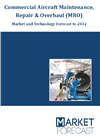FRCSW Sailors, Artisans Team Up to Service T-700 Engines
August 11, 2017
-While artisans in the Building 325 H-60 Seahawk maintenance facility ensure the structural integrity of the helicopter’s airframe, another group of Fleet Readiness Center Southwest (FRCSW) teammates in Building 379 focus on maintaining the aircraft’s power source: the T-700 401C engine.
Manufactured by the General Electric Co., maiden testing of the turboshaft 401 model began in March 1987. The following year it was selected for production in the SH-60 Seahawk.
With more than 1,800 shaft horsepower, the 401C variant currently powers the AH-1Z Viper, UH-1Y Venom and H-60 helicopters.
FRCSW overhauls, repairs and performs testing on the 410C engines with a staff of 48 active duty personnel and five civilian artisans handling the workload through five work centers.
“There are just a few issues that require depot-level work. We have two artisans in the Building 379 work center, two in the test cell and one artisan assigned to the auxiliary power unit (APU) work center,” said Aviation Machinist Mate Petty Officer 1st Class (AD1) Nicholas Wintrow, Power Plants division leading petty officer.
APUs supply electrical power to many of the aircraft’s systems including the engine and air conditioning units.
“The engine is basically four large pieces and is designed to easily come apart so you can work on a specific module at a time, versus tearing the entire engine down to repair one particular part,” Wintrow said.
The 401C is comprised of a cold section module, a power turbine section module, a “hot” section between the two, and an accessory gear box that holds oil filters and pilot indicators.
Engines requiring service are removed from the aircraft by the squadrons and preserved prior to FRCSW induction.
Most engines are inducted for low power issues or when they approach their life span of approximately 2,000 flight hours; or if an internal component reaches a high-flight hour interval adversely affecting performance.
“When troubleshooting by the squadron is exhausted, the engine will come to us and we’ll verify what they did,” Wintrow said. “We’ll use a borescope as there are a lot of other signs internally that indicate a degradation of engine power. Compression may be worn down because of a crack that is allowing air to escape, for example.”
Engines are also inspected to ensure all of their components are intact and afterward, preserved again, to ward off corrosion. Repairs are made on a first-in, first-out basis.
“We operate like an inbox-outbox in one location. We don’t have people who do only one thing. The modules are removed from the engine and go to slated spots on the shop floor,” Wintrow said.
“AIRSpeed-wise the whole shop is catered to this --- disassembly, inspection, clean, parts ordered and reassembly all in the same space.”
“The engines stay here but the APUs are distributed through Defense Logistics Agency (DLA). We’re the only Navy APU test facility on the West Coast so we’ll get finished, but not tested, APUs from other commands which also go through DLA,” he said.
The Power Plants division issues about eight engines monthly, and issued 104 last year. Its customers include North Island squadrons, Naval Air Station Fallon, Nev., and Aviation Intermediate Maintenance Department (AIMD) Atsugi, Japan.
“More than 50 percent of the Navy’s T-700 engines are serviced here. Short of GE, we handle more of these engines than anyone else,” Wintrow said.
Source : Naval Air Systems Command


